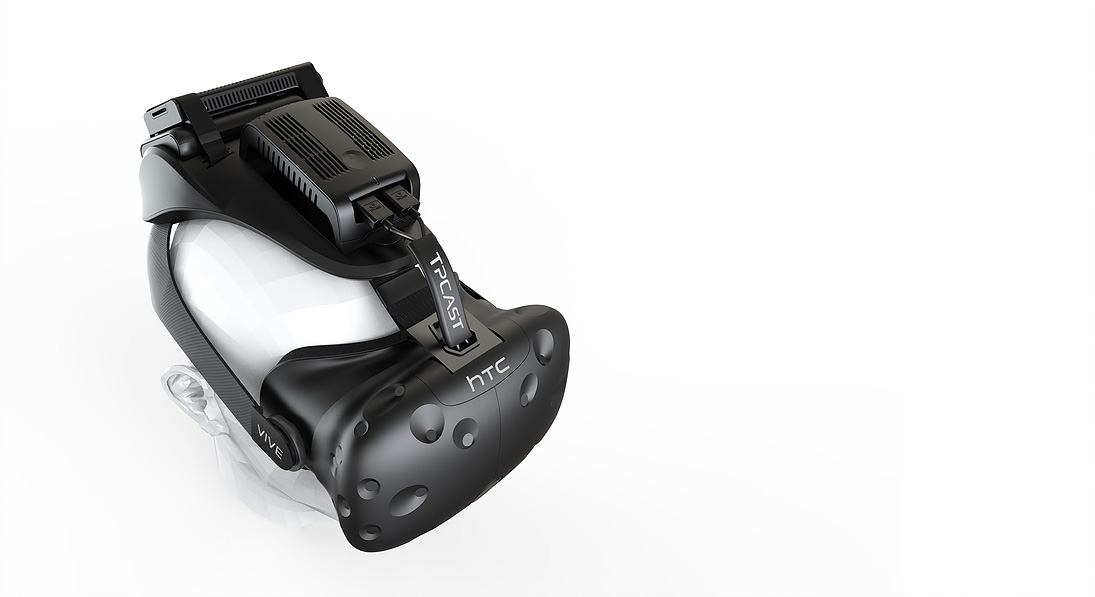TPCast’s 2nd Gen Wireless VR System Addresses Original's Shortcomings
LAS VEGAS, NV -- During CES 2018, TPCast revealed the upcoming second generation of the company’s wireless VR system. The new device, dubbed TPCast Plus, is an all-around improved product that should put to rest complaints about the original model.
TPCast first introduced its wireless system in China in late 2016. The company partnered with HTC China to distribute the kits as an upgrade for the HTC Vive VR system. The following January, at CES 2017, TPCast announced that the rest of the world would be able to enjoy tether-free VR within the year. It took most of the year to fulfill that promise, but TPCast began shipping units to European and North American customers in the fall. You can even get a TPCast Wireless Adapter for the Oculus Rift now.
We haven’t had the chance to test the TPCast Wireless Adapter, but we’ve seen reports from people who have purchased one complain about the shortcomings. For example, the TPCast Wireless Adapter disables the microphone in the Vive. People have also reported that their headset would lose signal from time to time, which would require a reboot of the system to correct. Furthermore, the TPCast Wireless adapter requires a dedicated router (included in the box) that makes setup complicated and cumbersome, and it can interfere with your existing home network.
Evidently, TPCast is paying attention to its customer base, because the upcoming TPCast Plus appears to address all the major concerns about the current model, and then some.
The TPCast Plus features the same wireless transmission technology as the original model, which can handle 2K @ 90Hz per eye while introducing less than 2ms of latency. The new version includes several new functions that improve the operation of the device, such as the ability to automatically restart if the system hangs, and automatic wireless channel detection to reduce interference, which TPCast said “substantially improves the stability” of the wireless solution. The new adapter also features updated processing hardware, which reduces the time needed to reboot the device.
The TPCast Plus system also replaces the cumbersome router with a simple USB dongle to simplify the set up process and introduces support for the microphone inside the headset.



Additionally, TPCast created a head plate, which provides a location to mount the battery pack. The head plate attaches to the HMD's top strap along with the receiver module. The battery mounts horizontally across the back of the head plate. The cables for the battery run through the head plate so they won’t get in the way while you’re putting the headset on or moving around with it.
Get Tom's Hardware's best news and in-depth reviews, straight to your inbox.
"The launch of the TPCAST Plus Adapter positions TPCAST as the leader in the Wireless VR Market. The consolidation of the adapter components into one Wireless VR unit allows a fully immersive user experience," stated Michael Liu, CEO of TPCAST. “We expect that this upgraded product family will lead to a rapid increase of VR content that takes advantage of Wireless Virtual Reality experiences, thus bringing more consumer and enterprise customers into the wireless VR market.”
TPCast said that the TPCast Plus Wireless Adapter would support the Oculus Rift and the HTC Vive, though we don’t know if one model supports both headsets, or if the company will release two different TPCast Plus SKUs. We’re also not sure how much the updated adapters will cost, but we should know more within a few months, because TPCast plans to have them on sale within the first half of the year.
Kevin Carbotte is a contributing writer for Tom's Hardware who primarily covers VR and AR hardware. He has been writing for us for more than four years.
-
edhem Right now TPCast has 100% market share, so they better make all the earnings, before the other solutions come to market. (HTC, etc.)Reply -
uglyduckling81 Did they really address our main concerns?Reply
Not available in Australia and US$300 for one.
Make it $100 and sell them everywhere then start talking about solving peoples gripes with it. -
Sakkura Reply20577342 said:Did they really address our main concerns?
Not available in Australia and US$300 for one.
Make it $100 and sell them everywhere then start talking about solving peoples gripes with it.
$100 is not realistic. Maybe $199 if we're lucky.
Also the fact that it didn't support the microphone was a huge oversight. It's a dealbreaker issue.
The dumb thing is you could fix that problem by changing the software. Some independent devs put together OpenTPCast and did what the TPCast software engineers themselves somehow were incapable of.
